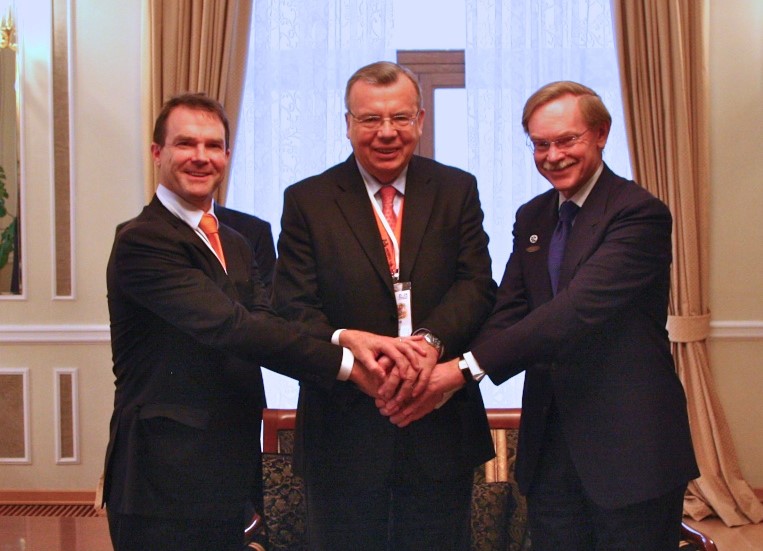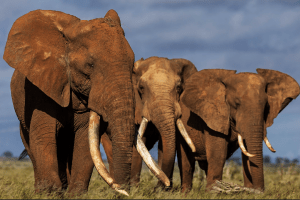By John Scanlon AO and Robert Zoellick
In Memoriam. Yuri Fedotov, Executive Director UNODC 2010-2019
Twelve years ago, we founded the International Consortium on Combating Wildlife Crime (ICCWC), with no dedicated staff or resources. Today, ICCWC is fully operational, well-resourced, and an example of interagency cooperation at its best.
Why We Created ICCWC
Launched at the Global Tiger Summit in Saint Petersburg, Russian Federation, on 23 November 2010, ICCWC was a collective response to a disturbing surge in wildlife trafficking driven by transnational criminal groups, in recognition of the inadequacy of the global response to these highly destructive crimes.
United under the banner of ICCWC, the executive heads of the CITES Secretariat, INTERPOL, the UN Office on Drugs and Crime (UNODC), The World Bank, and the World Customs Organization (WCO) agreed to usher in a new era in wildlife law enforcement, one where wildlife criminals would face a more determined and coordinated opposition.
Has ICCWC been a success?
As two of the original signatories to the ICCWC, we both look back at the past decade with a sense of pride at what has been achieved. The Consortium has raised the profile of wildlife crimes. It has provided invaluable assistance to countries through direct advisory support, guidelines, and toolkits, and by supporting coordinated cross-regional enforcement operations. With UNODC, it launched the first-ever UN World Wildlife Crime Report in 2016, with a second report released in 2020, and it has attracted more resourcing for the issue.
ICCWC has achieved much of what we had hoped for when we, together with Yuri Fedotov (UNODC), Ronald K. Noble (INTERPOL), and Kunio Mikuriya (WCO), signed up over a decade ago. We are in a much better position today than in 2010 to tackle wildlife trafficking, including in enforcing national CITES-related legislation.
By 2023, tigers are rebounding, and the disturbing levels of poaching of elephants and rhinos and the smuggling of their ivory and horns seen in the first half of the last decade are steadily declining. These are encouraging results, which ICCWC has contributed towards.
But these successes are fragile and insufficient. International cooperation and national action are lacking. The trafficking of many species continues to surge, including fish and timber species. We are witnessing record levels of poaching of pangolins for their meat and scales.
What has changed since 2010
Since the launch of ICCWC, our knowledge of the scale, nature, and consequences of wildlife crimes has vastly improved. For example, in 2019, The World Bank assessed the value of these crimes. It arrived at a staggering figure of USD 1 trillion – 2 trillion a year, when factoring in the species’ ability to sequester carbon, other impacts on ecosystems, and the loss of government revenues.
Today, we are still feeling the effects of a global pandemic, which most likely had its origins in wildlife. We have clear scientific advice on the risks of even more destructive viruses spilling over from wild animals to people. The 2020 ‘Pandemics Report’ from the Intergovernmental Science-Policy Platform on Biodiversity and Ecosystem Services (IPBES) vividly describes the links between wildlife trade, disease emergence, and biosecurity.
A Global Biodiversity Framework 2030 (GBF) was adopted in December last year. Achieving Target 5 on the use, harvesting, and trade of wild species, amongst many other targets, will require an enhanced enforcement effort.
What more is needed today?
The Convention on International Trade in Endangered Species of Wild Fauna and Flora (CITES) has been heavily relied upon to date. In the absence of any other instrument, best possible use has been made of the Convention. But CITES is a 50-year-old trade-related convention. It does not provide the international legal framework that is needed to tackle wildlife trafficking and it covers just 39,000 of the world’s 8 million species.
More must be done to win this fight, including by scaling up enforcement, financing, laws, policies, and engagement with Indigenous Peoples and local communities. CITES has an important role to play in providing a framework for regulating legal and sustainable trade, which is what it was designed to do. But CITES’ mandate in tackling wildlife trafficking has been stretched to the limit.
States should take up the opportunity presented through the adoption of the historic UN Commission on Crime Prevention and Criminal Justice Resolution in May of 2022, and assess the (in)adequacy of our international laws in tacking wildlife trafficking and the benefits of embedding preventing and combating these serious crimes into the international criminal law framework.
ICCWC should continue to strengthen its collaborative enforcement work, including to support achieving the GBF, noting that success also goes beyond CITES and ICCWC.
Looking ahead to the next 50 years
Wildlife trafficking, and other crimes that affect the environment, will get increasing recognition within the international criminal law framework, and related programmes, including through additional Protocols to the UN Convention against Transnational Organized Crime. This will lead to UNODC becoming the agreed ‘center of gravity’ in addressing wildlife trafficking.
ICCWC will continue to grow and may need to consider expanding its membership and broadening its scope beyond CITES-listed species, something the founding Letter of Understanding contemplated. As UNODC takes on a greater leadership role, CITES will focus more effort on its core scientific, regulatory, and management functions.
Robert B. Zoellick is former President of the World Bank (2007-2012), US Trade Representative, and US Deputy Secretary of State, and is an Adjunct Professor at Harvard University’s Kennedy School.
John Scanlon AO is CEO of the Elephant Protection Initiative Foundation, Chair of the UK Government’s IWT Challenge Fund, Chair of the Global Initiative to End Wildlife Crime and former Secretary-General of CITES (2010-2018).
On 3 March 2023, CITES will celebrate its 50th anniversary. This article is part of a series themed, ‘CITES at 50,’ the SDG Knowledge Hub is publishing to commemorate the occasion.

